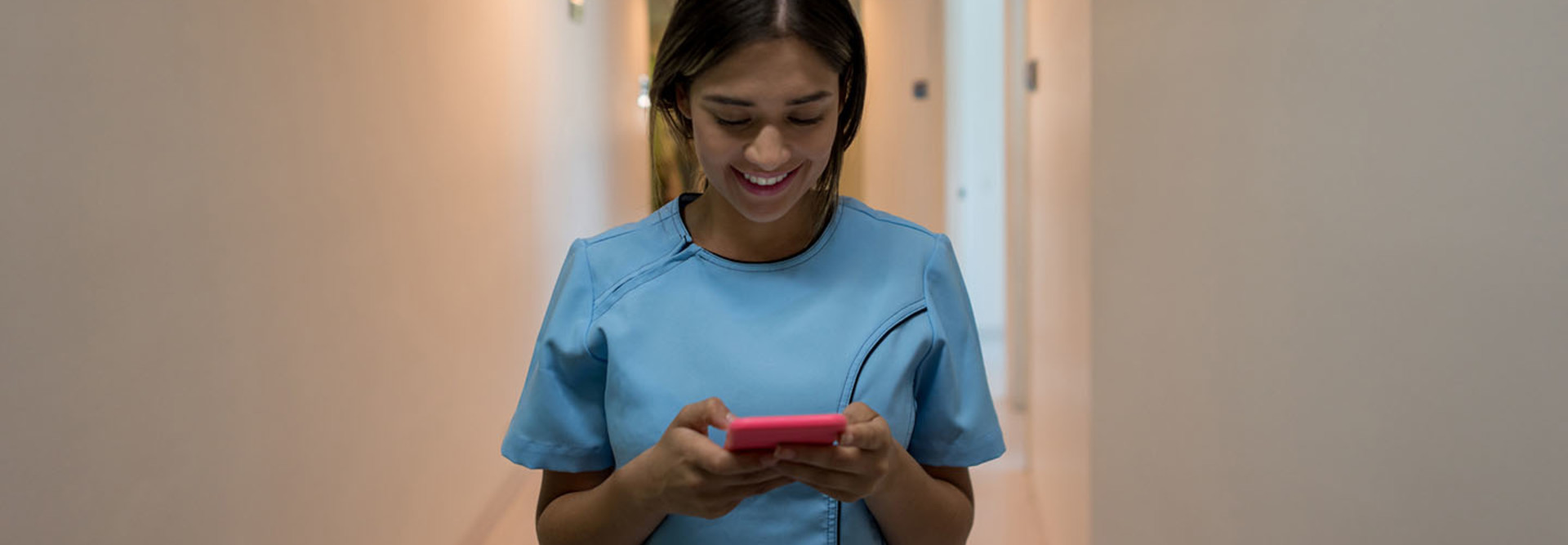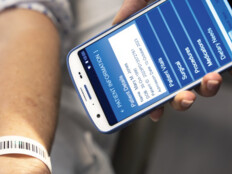Wayfinding Technology Makes Its Way onto Healthcare Campuses
Hospitals are confusing places. Despite the need for patients and providers to move quickly and efficiently through the buildings and across healthcare campuses, hospitals can often feel more like grocery stores, where people have to stop by every department to find what they’re looking for — a model that’s less than ideal.
Wayfinding technology, which can offer a way for patients as well as hospital staff navigate hospitals more deftly can help, with the added value of improving the patient experience, an important part of new value-based care models.
MORE FROM HEALTHTECH: See how navigation and IoT-based solutions reduce patient and visitor anxiety.
What Is Wayfinding Technology?
The University of Michigan defines wayfinding as “spatial problem solving. It is knowing where you are in a building or an environment, knowing where your desired location is, and knowing how to get there from your present location.”
Wayfinding doesn’t always include technology — architecture, lighting and static signage all contribute to how people find their way around an area — but many organizations are opting for digital tools, such as kiosks or mobile apps, to improve the experience for visitors and staff alike.
Think of modern wayfinding apps for healthcare campuses much like using Google Maps or other navigational tools to find your way around city streets. By tapping mobile navigation apps, hospitals can help patients or visitors who are, quite possibly, setting foot on the campus for the first time, understand where they are located and obtain directions to their desired location.
Case Study: Aruba Wayfinding Enhances Visitor Navigation at Atrium Health
Atrium Health’s Carolinas Medical Center is one such provider making use of mobile wayfinding tools to help patients and visitors reach their destinations more quickly and independently, HealthTech reports.
The effort, led by Pamela Landis, vice president of information and analytics services at Atrium Health, made use of Aruba’s Meridian AppMaker to quickly create a unique app that reflected up-to-date maps of the interior of the healthcare organization. The app, once downloaded, relies on Bluetooth beacons to lead patients around campus in real time.
“It looks like a Google map or any GPS mapping tool,” Landis tells HealthTech. “What I like about the app experience is that it is very simple and easy to use for the patient or visitor.”
The maps were eventually expanded to include the entire care campus, with the aim of helping patients reach multiple appointments across the campus more quickly and helping visitors track down hospital departments or restaurants.
“If you are there visiting family all day, you need a little Chick-fil-A or a little Starbucks,” Landis tells HealthTech, noting that the current top search term in the app is for the fast-food restaurant, and that tracking user statistics helps the team to build a more user-friendly app. “That really makes us put ourselves in our patients’ and visitors’ shoes.”
VIDEO: Check out the advantages of putting an iPad in every room at Phoenix Children's Hospital.
Case Study: Boston Children’s Wayfinding App Improves the Patient Experience
Similarly, Boston Children’s Hospital has tapped similar technology to alleviate confusion and improve navigation across the eclectically built, 12-building healthcare campus. Attributing success to the organization’s ability to achieve buy-in from physicians and departments early in the process, the hospital put its MyWay app in place in 2012; 65 percent of users say it has improved their experience, according to a case study from Aruba.
“Not only does the app provide simple turn-by-turn directions through hospital corridors and across streets, but it also acts as a concierge,” says Chandra Edwards Craven, the project lead for MyWay at Boston Children’s, in a report from Aruba. “Visitors are able to find information such as who clinicians are, what they specialize in, and where their offices are located.”
Healthcare Kiosks Augment Patient Navigation
Apps aren’t the only tool that can improve wayfinding; digital signage and kiosks can also play a key role in helping hospital visitors get where they’re going.
Digital-map kiosks in hallways can help patients who haven’t downloaded the app figure out where they are and navigate a path to their desired location.
At Saint Luke’s Hospital of Kansas City in Missouri, for example, kiosks and interactive signs work in concert with wayfinding apps to help patients and visitors navigate the hospital.
“We’ve made a pretty aggressive push toward using digital technology to improve the patient experience, and wayfinding was identified early on as an area of focus,” Saint Luke’s Chief Digital Officer Deborah Gash tells HealthTech.










